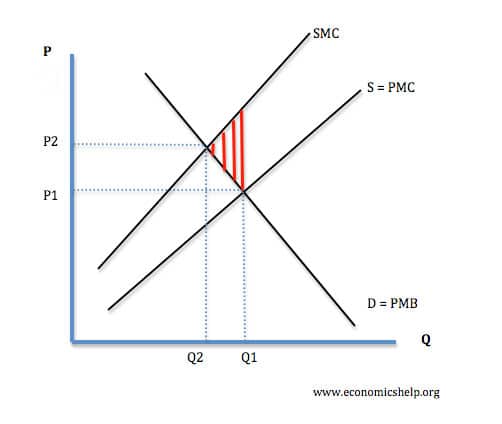Social Efficiency
Definition of Social efficiency. This is the optimal distribution of resources in society, taking into account all external costs and benefits as well as internal costs and benefits. Social Efficiency occurs at an output where Marginal Social Benefit (MSB) = Marginal Social Cost (MSC).
Social efficiency is closely related to the concept of Pareto efficiency – A point where it is impossible to make anyone better off without making someone worse off
Note:
- Social benefit = private benefit + external benefit
- Social Cost = private cost + external cost
Point of Social Efficiency
We say social efficiency occurs at an output where Marginal Social Benefit (MSB) = Marginal Social Cost (MSC)

In a free market, consumers ignore the external costs of consumption (e.g. drive a car but don’t factor in the congestion you cause to other people). Therefore, free market equilibrium is at Q1 (where S=D).
However, at Q1 the Marginal Social Cost is greater than the Marginal Social Benefit. Therefore by consuming at this point, the cost to society is greater than benefit (e.g. think of traffic jams and pollution because too many people drive at once). We say there is a deadweight welfare loss – indicated by red triangle.
If output is less than equilibrium. The MSB is greater than MSC. If we increase output, the addition to social welfare (MSB) is greater than the cost of an extra unit, therefore, net social welfare increases.
Implications of Social efficiency
It is important to take into account externalities (both positive and negative) It can be difficult to measure externalities, but we need to make an effort.
